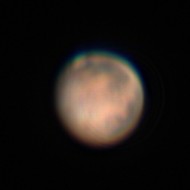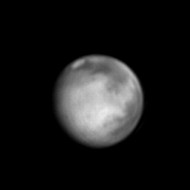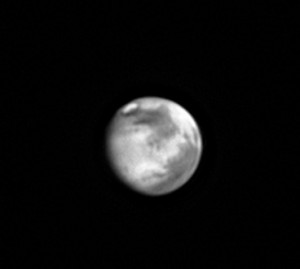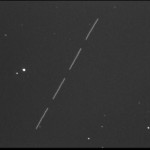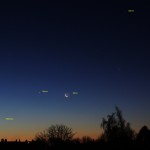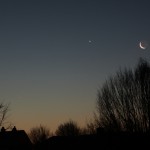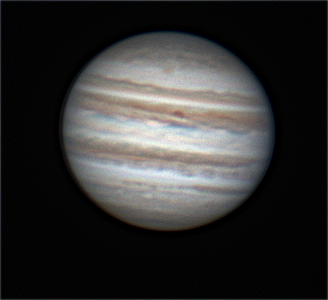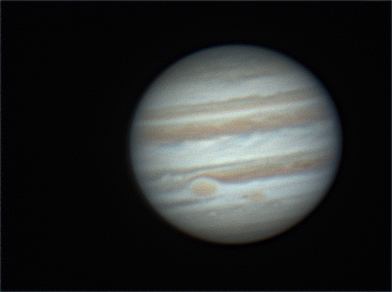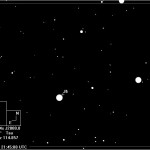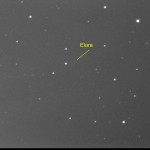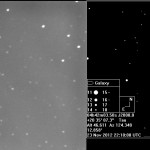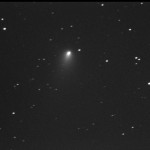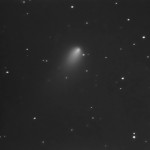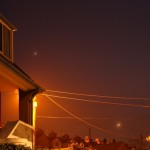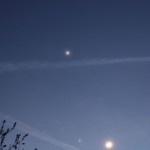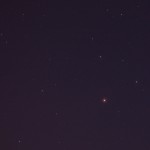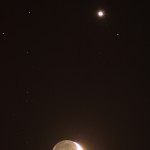Pictures taken on 13/05/2014. This one with the colour DBK camera:
and this one with the monochrome DMK camera and a red filter. The result with the red filter is amazing given the seeing was pretty poor. Both images are based on a video of 10000 frames using the best 25% from Autostakkert.
On 15/05/2014 the seeing was better than on the 13th. I also switched the camera frame rate down from 60 to 30fps which seems to have got rid of the slight ring effect seen on the western hemisphere above

